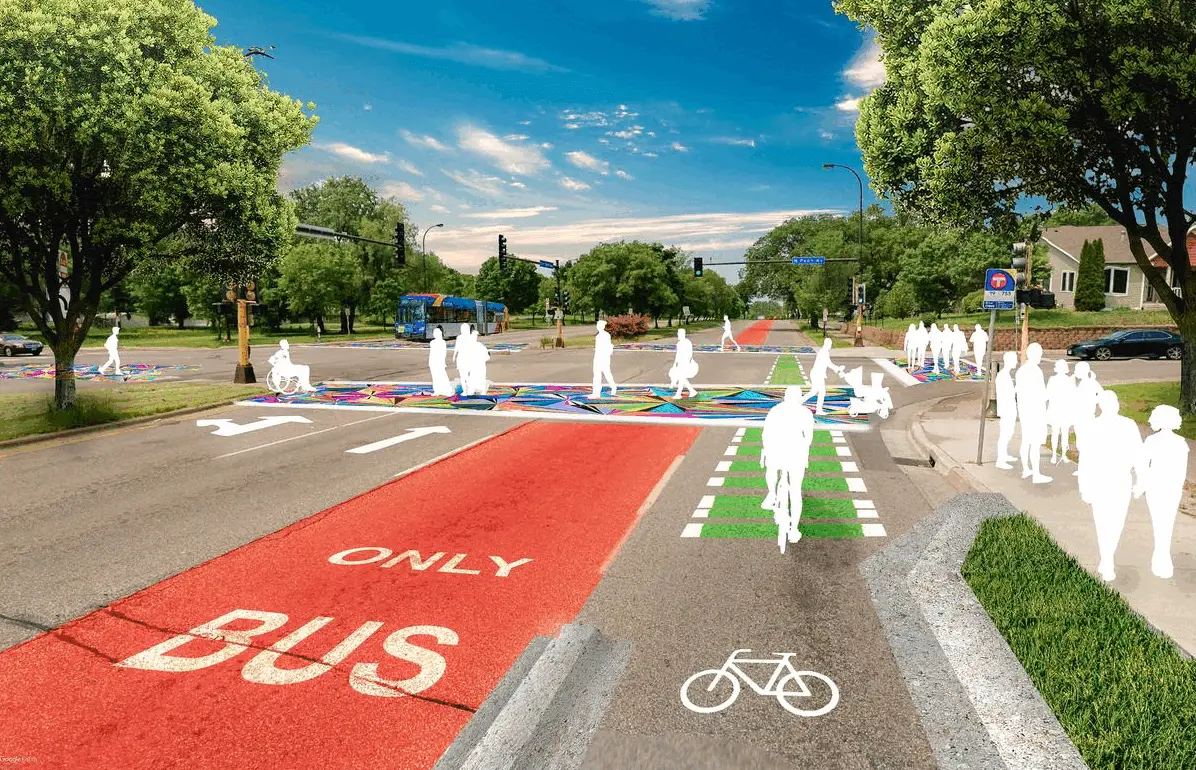
A project to “Bring Back 6th” in Near North Minneapolis has received a $1.6 million federal grant as part of the Reconnecting Communities Program, which aims to reconnect communities that were cut off due to past transportation and infrastructure decisions.
The Bring Back 6th project, organized by Our Streets MPLS in collaboration with Harrison Neighborhood Association, addresses reparative justice with a plan to convert Olson Memorial Highway into a boulevard and reclaim highway land back to the community.
Where Olson Memorial Highway is today was once 6th Avenue North, a diverse Black and Jewish cultural corridor affected by Minnesota’s ugly history with racial covenants. In 1939, the construction of the highway destroyed every home and business on 6th Avenue North, aside from Sumner Library. Similar dispossession continued in the decades to follow as the highway was expanded.
In May of last year, the Minneapolis City Council passed a resolution to remove the northside highway. Just last week, the Minnesota Department of Transportation (MnDOT) released project options for the reconstruction, including one that reflects the Bring Back 6th campaign vision. MnDOT is also a recipient of federal funding from the Reconnecting Communities Program for a larger portion of Olson Memorial Highway focused on bus rapid transit.
“This is a first step,” says José Antonio Zayas Cabán, executive director of Our Streets MPLS. “Our goal is to build momentum and help other communities dismantle urban highways in the Twin Cities and across the state.”
Part of the campaign involved researching the neighborhood’s lost history in collaboration with the University of Minnesota Heritage Studies and Public History program. Graduate students created a mobile history museum that has been exhibited in various parts of Minneapolis, including the only surviving building, Sumner Library.
The Bring Back 6th project is one of 132 initiatives nationwide that received $3.3 billion in grants.
Support immediate safety improvements on Olson.
Take action by emailing key decision makers and standing up for reparative justice.